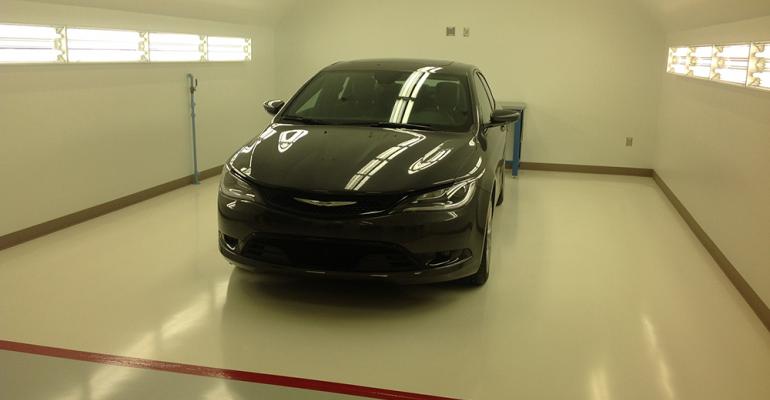STERLING HEIGHTS, MI – Chrysler is betting several production processes created for the new ’15 200 sedan production will result in more satisfied customers.
Bringing the new 4-door to life at this suburban Detroit plant is a combination of high-tech automation mixed with old-fashioned visual inspection and detective work.
Chrysler, now part of Fiat Chrysler Automobiles, invested $1 billion in the Sterling Heights assembly plant, pulling it back from the brink of closure in 2010.
That money went toward a variety of improvements, including an advanced Kuka laser-braze system in the new $165 million body shop here that gives the 200 a trim-free roof.
“Our laser braze on our roof will be the first in this market segment,” Tyree Minner, Sterling Heights plant manager, tells media during a tour.
Chrysler began using the technique, which joins the roof and body sides of car seamlessly without the need for added trim, with the ’08 Chrysler 300 and Dodge Charger large cars. The current Dodge Dart compact car and new Jeep Cherokee CUV also user laser braze.
Before brazing takes places, two spot welds each are performed at the front and rear of the 200’s roof to maintain a stable geometry. Then the panels go into the laser booth, where even pressure is applied, pushing the roof into the body sides to ensure the panels are no further apart than 0.01 in. (0.3 mm).
A silicone-bronze wire is fed through a frictionless feeder and a laser liquefies the wire, creating a mechanical bond between the roof and body-side sheet metals. The joint then is ground smooth for a “Class-A appearance,” says Dan Koessler, body-in-white process engineer at the Chrysler Technology Center, who describes the laser-braze process as being similar to “a very high-tech caulk gun.”
Other new automation in the body shop includes an auto-panel line and an open-gate framer.
The auto-panel line robotically fastens the doors, fenders, decklid and hood to the car via 51 stations and 68 robots, aided by 24 vision systems that make sure the robots are in alignment before screwing components down.
“By far, quality is better with this line (because of) the tolerances we can hold with robots, plus the ability to make virtual shims is essential,” says Brian Kelly, launch manager-APL & Closures at the plant.
Tolerances for closures, flushes and gaps are plus-minus 0.04 in. (0.9 mm), and 74 “critical points” are monitored for flush-and-gaps, he says.
5,500 Points Checked
Updates to Sterling Heights' general assembly area include the addition of a new Quality Assurance Center that checks about 5,500 points per car. The center is Chrysler’s first to combine under one roof a variety of quality-inspection processes, including a consumer-product audit, center for technical-vehicle verification and a materials lab.
A consumer-product audit puts about 20 cars per day through a top-to-bottom inspection, mostly ferreting out appearance flubs over roughly 2,000 check points.
The CTVV seeks out more functional problems, checking for proper wheel alignment and conducting airflow testing to make sure excessive wind noise and water leaks aren’t present.
“If we see some strange things going on with our airflow test, we know we may have some sealer issues, maybe from our body shop or paint shop,” says Robert Hathaway, senior manager-quality at the plant.
A lighting tunnel separate from those in the paint shop reveals surface imperfections or metal defects on the 200’s body.
Hathaway is most excited about the QAC’s materials lab. “We haven’t had anything like this here before at Sterling Heights,” he says of the space, which inspects parts before they are used on vehicles.
“So proactively, we’ll put (a bolt) under the microscope, we’ll look at all the different characteristics of a bolt, and we’ll make sure the supplier is giving us exactly what they promised and everything’s to spec,” he says.
The lab also will trace back to the manufacturing process an issue it has uncovered. For instance, it recently deduced a foreign substance on a 200 seatbelt was grease from a conveyer.
Finding out it was a type of grease via testing “limited us to what we had to go look for out on the floor,” Hathaway says. “And what we found was there’s a conveyer chain that had grease that was dripping off of it. We took a sample of that grease, ran some more tests (and) it matched perfectly with the material on the seatbelt.”
The solution? Oil pans to catch the drips.
The new 200 goes on sale in the second quarter in the U.S., starting at $21,795 for a base LX grade and hitting $27,390 for a Limited grade with leather interior.





